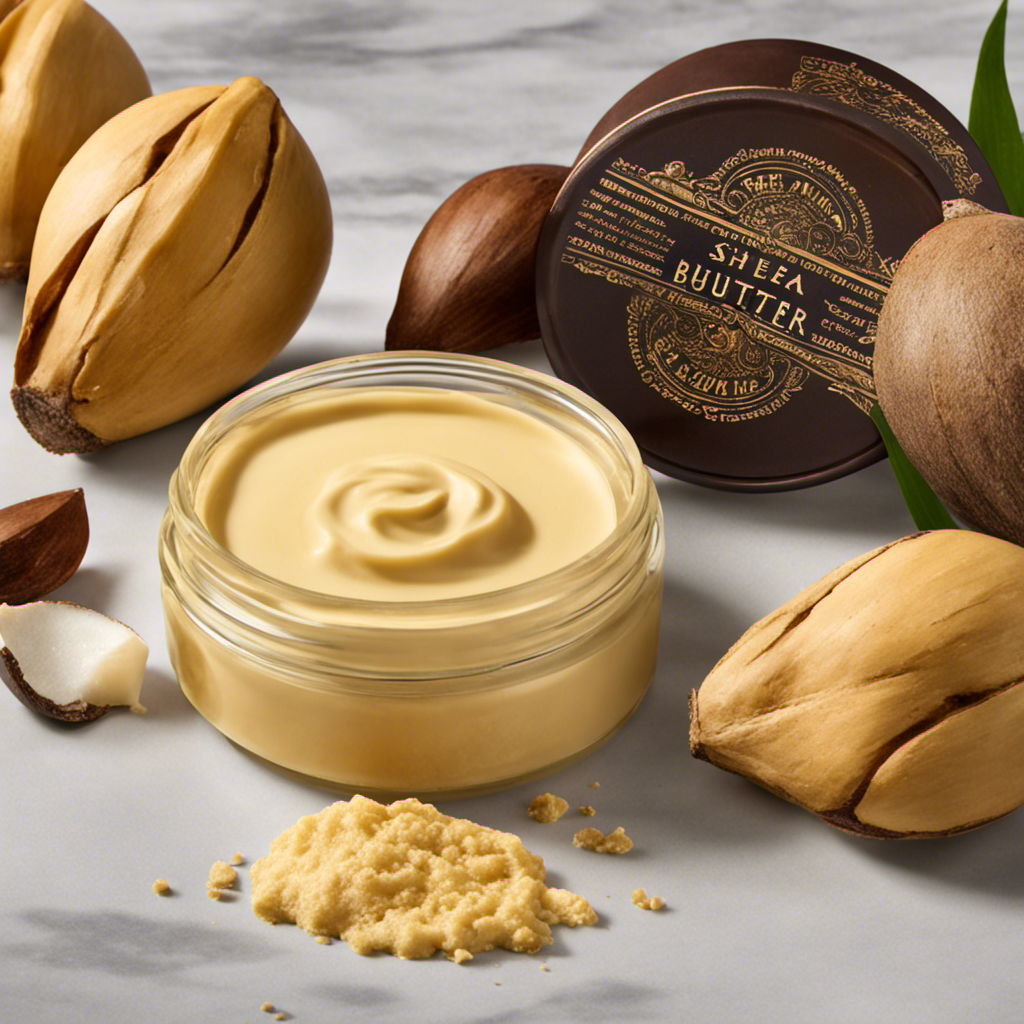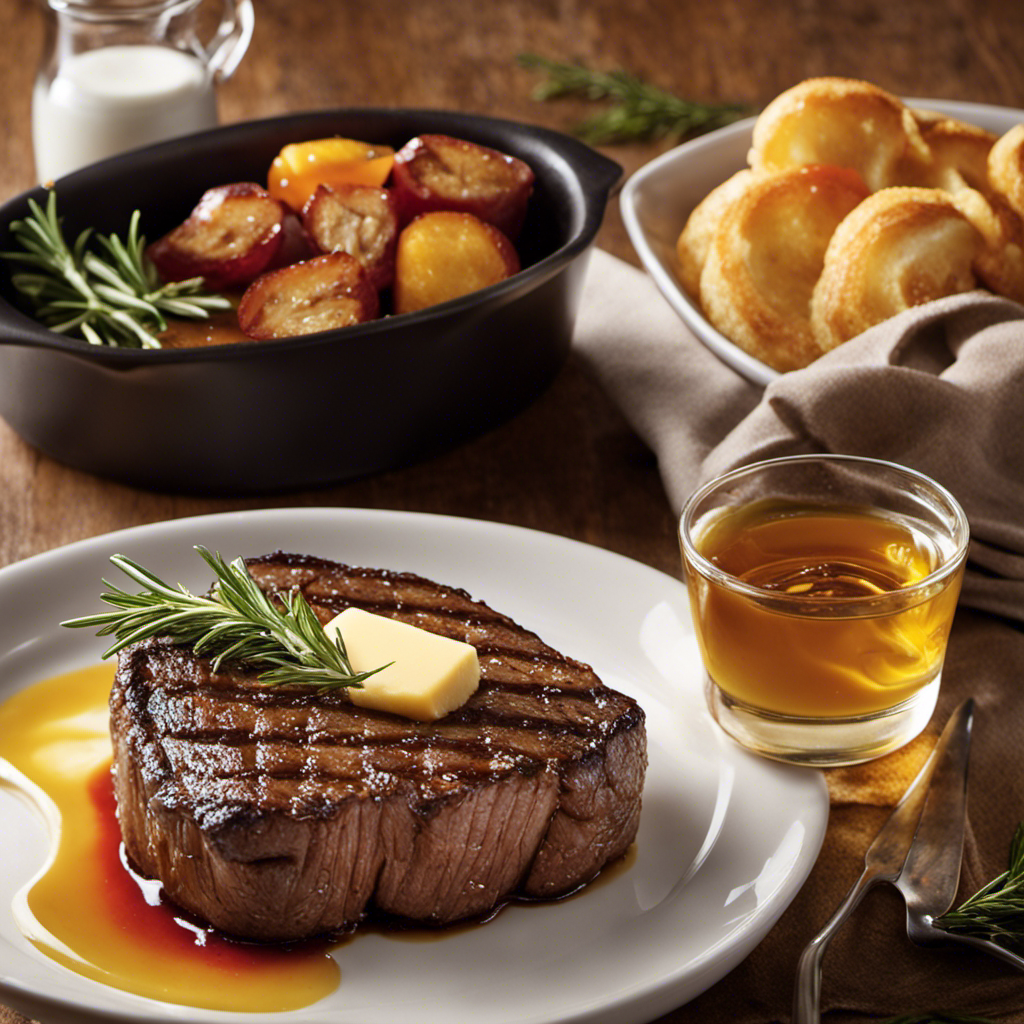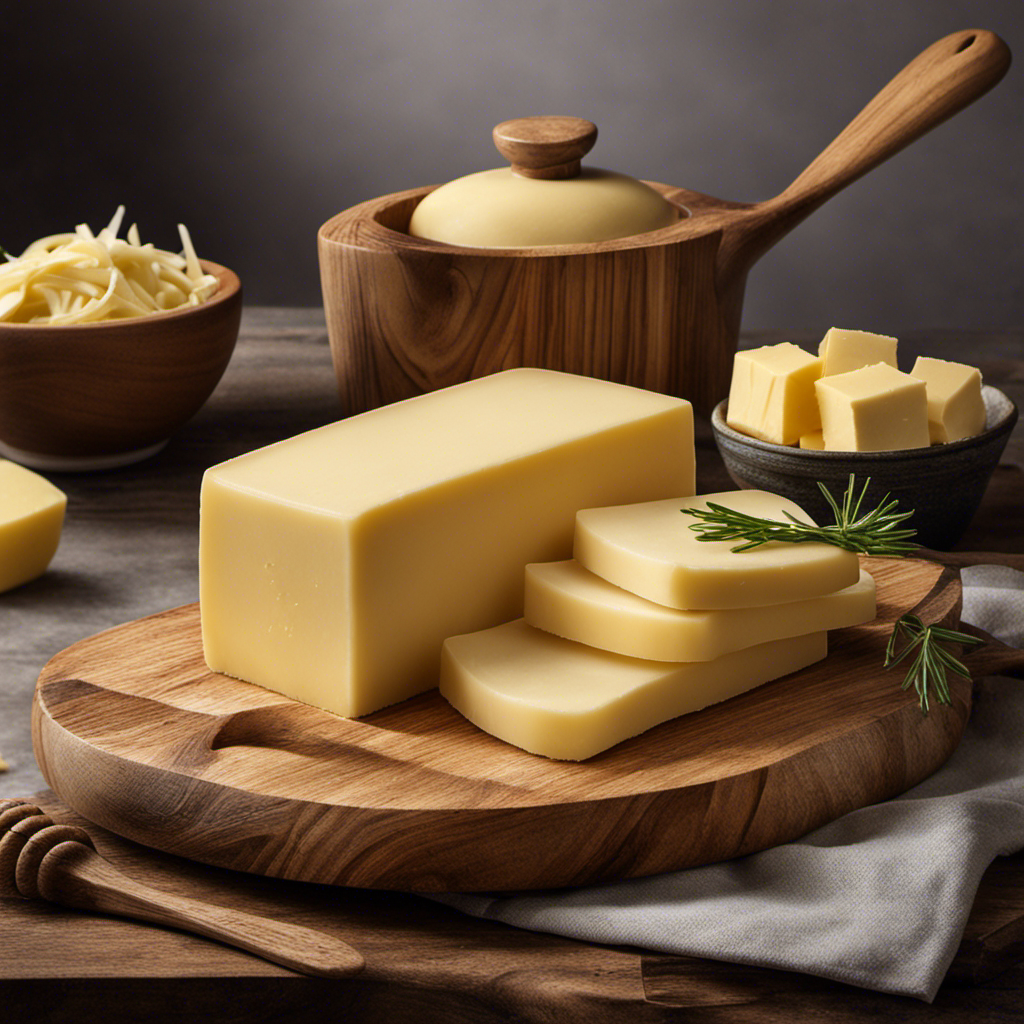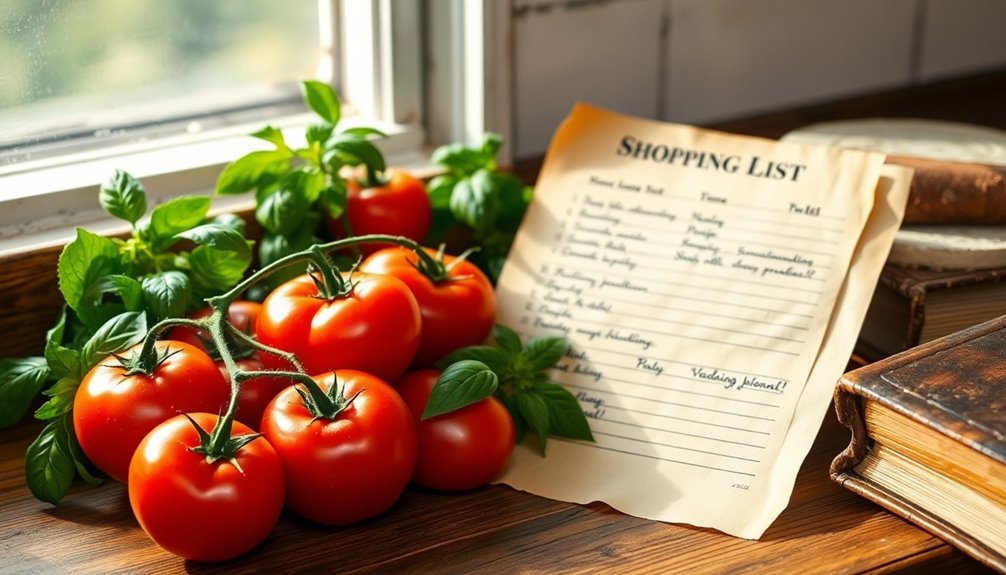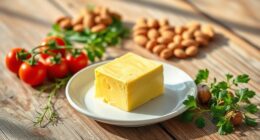As a designer, I am constantly searching for color palettes that can revitalize any space.
Did you know that butter yellow is one of the most versatile and inviting hues out there? In fact, it pairs beautifully with a wide range of colors, from warm neutrals to bold contrasts.
Whether you prefer a soft pastel palette or want to make a statement with metallic accents, there’s a perfect color companion for butter yellow.
Let’s explore the endless possibilities together.
Key Takeaways
- Butter yellow’s complementary color is a shade of purple, such as lavender or plum.
- Complementary colors create a vibrant contrast when placed side by side.
- Understanding complementary colors is crucial for visually appealing color palettes.
- Complementary color combinations can be used in designs and color choices.
Complementary Colors
Complementary colors are the ones that go well together. When it comes to creating visually pleasing color palettes, understanding complementary colors is crucial.
Complementary colors are pairs of colors that are opposite each other on the color wheel. They create a vibrant contrast when placed side by side. In color psychology, complementary colors are known to evoke strong emotions and create a sense of balance.
For example, if you have butter yellow as the main color, its complementary color would be a shade of purple, such as lavender or plum. This pairing creates a beautiful balance of warm and cool tones.
Understanding complementary colors allows you to create visually appealing designs and make informed choices when it comes to color combinations.
Warm Neutrals
When it comes to creating a warm and inviting space, it’s important to consider complementary color options that will enhance the overall atmosphere.
Coordinating with wood tones is another crucial element, as it helps to bring a sense of harmony and natural beauty to the room.
And let’s not forget about adding warmth with textures; incorporating soft fabrics, cozy rugs, and tactile elements can make a space feel more inviting and comfortable.
Complementary Color Options
Yellow and purple are often paired together to create a vibrant and visually pleasing color combination. When it comes to complementary color palettes, these two hues are a match made in heaven.
The warm, buttery yellow beautifully contrasts with the rich, regal purple, creating a dynamic and eye-catching look. Not only does this pairing create a sense of balance and harmony, but it also adds a touch of elegance to any space or outfit.
To take this color combination to the next level, consider pairing yellow with jewel tones like emerald green or sapphire blue. These deep, saturated colors enhance the vibrancy of the yellow and create a luxurious and captivating aesthetic.
Whether you’re decorating your home or putting together a fashionable ensemble, yellow and purple, along with jewel tones, are sure to make a statement.
Coordinating With Wood Tones
To coordinate with wood tones, it’s important to choose colors that complement the warm and natural hues of the wood. When working with wood, I find that incorporating metallic accents can add a touch of elegance and sophistication to the space. Here are three ways to coordinate with metallics and incorporate natural elements:
-
Pair warm wood tones with gold or brass metallics: The richness of gold or brass can enhance the warmth of wood, creating a harmonious and inviting atmosphere.
-
Combine cool wood tones with silver or chrome metallics: The coolness of silver or chrome can complement cooler wood tones, adding a modern and sleek touch to the space.
-
Balance wood with natural elements: Incorporate natural textures like stone, jute, or woven materials to create a cohesive and organic look. These elements can enhance the beauty of wood and bring a sense of nature indoors.
Adding Warmth With Textures
Adding different textures to a space can create a cozy and inviting atmosphere. When it comes to designing a warm and inviting space, incorporating textures is key.
One way to add depth and interest to a room is by incorporating patterns into the decor. Whether it’s through patterned pillows, rugs, or curtains, patterns can instantly elevate the overall look and feel of a space.
Additionally, incorporating natural elements, such as wood or stone, can bring a sense of warmth and comfort to a room. These natural textures add a touch of organic beauty and create a connection to the outdoors.
By combining different textures and patterns, you can create a space that feels layered and visually interesting.
Now, let’s dive into the next section and explore the use of soft pastels in interior design.
Soft Pastels
I’ll suggest that soft pastels like light pink or baby blue would complement butter yellow nicely. Mixing pastel colors can create a soothing and harmonious atmosphere in any space.
When it comes to incorporating floral patterns, pastel colors can enhance the delicate and feminine feel of the design. Here are three ways to incorporate soft pastels and floral patterns into your decor:
- Choose pastel-colored floral wallpaper or curtains to add a touch of elegance and charm to your room.
- Use pastel-colored throw pillows with floral patterns to create a cozy and inviting seating area.
- Consider incorporating pastel-colored floral artwork or prints on your walls to add a pop of color and visual interest.
Earthy Tones
Using earthy tones such as warm browns or deep greens will create a cozy and natural atmosphere in your space. These colors have a grounding effect and can instantly make a room feel warm and inviting.
When it comes to incorporating earthy textures into your decor, think about using materials like wood, stone, or natural fibers. These elements add depth and character to your space, enhancing the rustic feel.
A wooden coffee table or a stone fireplace can become the focal point of a room, while woven baskets or jute rugs can add texture and visual interest.
Pairing earthy tones with rustic decor creates a harmonious and organic look that brings the beauty of nature indoors.
Bold Contrasts
To achieve bold contrasts in your space, consider incorporating rich blacks or vibrant reds. These colors will create a dramatic and eye-catching effect, adding a sense of energy and excitement to any room. Here are three ways you can incorporate these bold colors into your space:
-
Accent wall: Paint one wall in a rich black or vibrant red to create a focal point in the room. This will instantly draw attention and create a sense of drama.
-
Furniture: Incorporate bold and vibrant colors through your furniture choices. Opt for a black leather sofa or a red accent chair to make a statement and add a pop of color to your space.
-
Accessories: Use bold and vibrant accessories, such as black and red throw pillows, rugs, or artwork, to add interest and depth to your space.
By incorporating these bold and vibrant colors, you can create a stunning and eye-catching space that is full of energy and personality.
Now, let’s transition into the subsequent section about ‘metallic accents’.
Metallic Accents
Enhance the overall aesthetic of your space by incorporating metallic accents, such as gold or silver. This can add a touch of elegance and sophistication. Mixing metals is a great way to create visual interest and give your space a modern and eclectic feel.
Consider incorporating metallic furniture pieces, like a sleek silver coffee table or a gold-accented side chair. This can make a bold statement. Layering textures is another way to add depth and dimension to your space. Pair metallic accents with plush velvet throws or textured rugs to create a luxurious and inviting atmosphere.
Don’t forget to add metallic accessories, like decorative vases or candle holders, to complete the look. These small details can make a big impact and tie the whole room together.
Monochromatic Schemes
When it comes to harmonizing butter yellow, monochromatic color combinations can be a great choice. By using different shades and tones of yellow, you can create a cohesive and visually pleasing look.
Monochromatic schemes offer a sophisticated and elegant aesthetic, allowing butter yellow to shine as the focal point while still maintaining a sense of harmony.
Harmonizing Butter Yellow
You can easily harmonize butter yellow with soft neutrals like beige or ivory. This versatile color adds a touch of warmth and brightness to any space, making it a perfect choice for coastal themed decor.
Here are three ways to incorporate butter yellow into your coastal-inspired design:
-
Accent pieces: Use butter yellow as an accent color in throw pillows, curtains, or rugs. This will add a pop of color to your space without overwhelming the overall coastal theme.
-
Furniture: Consider incorporating butter yellow into your furniture pieces, such as a cozy armchair or a stylish side table. This will create a focal point in the room and bring a cheerful vibe to your coastal decor.
-
Artwork: Hang artwork with vibrant floral patterns that incorporate butter yellow hues. This will add visual interest and create a harmonious blend of colors in your coastal-inspired space.
Monochromatic Color Combinations
While harmonizing butter yellow is a great way to create a cohesive color palette, another option to consider is incorporating monochromatic color combinations.
Monochromatic color schemes involve using various shades, tones, and tints of a single color to create a visually pleasing and harmonious look. When it comes to butter yellow, you can create a stunning monochromatic combination by pairing it with shades of soft yellow or creamy off-white. This creates a subtle and elegant look that exudes warmth and sophistication.
Additionally, if you want to add some contrast and visual interest to your monochromatic scheme, you can incorporate patterns. Consider using patterns in complementary colors, such as a yellow and gray floral print or a yellow and white geometric design, to create a dynamic and eye-catching aesthetic.
Frequently Asked Questions
Can You Suggest Some Specific Color Combinations With Butter Yellow for a Monochromatic Scheme?
I can suggest specific color combinations for a monochromatic scheme with butter yellow. To create contrast, you can pair it with shades of orange, peach, or coral. These colors will complement and enhance the butter yellow hue.
What Are Some Popular Metallic Accents That Pair Well With Butter Yellow?
Incorporating metallic accents into a butter yellow color scheme adds a touch of elegance and sophistication. Unique ways to use these accents include using gold or silver accessories, like lamps or picture frames, to create a stunning contrast.
Are There Any Warm Neutrals That Clash With Butter Yellow and Should Be Avoided?
Yes, there are cool tones that complement butter yellow and create a balanced color palette. The intensity of butter yellow can impact its compatibility with different warm neutrals, so it’s important to consider the desired effect.
Can You Recommend Any Soft Pastel Colors That Create a Calming Effect When Paired With Butter Yellow?
Soft pastel colors like lavender and mint green can create a calming effect when paired with butter yellow. To create a harmonious monochromatic scheme, use different shades of butter yellow for a soothing and cohesive look.
Are There Any Bold Contrasting Colors That Should Be Used Sparingly When Combining With Butter Yellow?
Bold contrasting colors should be used sparingly when combining with butter yellow for a modern look. Incorporating patterns can add visual interest. Consider using navy blue or emerald green as accent colors to create a striking contrast.
Conclusion
In conclusion, when it comes to pairing colors with butter yellow, there are several options that can create a cohesive and visually appealing look.
Complementary colors like lavender or soft pink can add a touch of femininity, while warm neutrals like beige or taupe can create a cozy and inviting atmosphere.
Soft pastels like mint green or baby blue can bring a delicate and calming vibe, while earthy tones like olive green or burnt orange can add a natural and organic feel.
For those looking for a bolder statement, contrasting colors like navy blue or deep purple can create a striking effect. Adding metallic accents in gold or silver can introduce a touch of glamour and sophistication.
Lastly, monochromatic schemes using different shades of yellow can create a harmonious and elegant look.
While some may argue that butter yellow is a difficult color to work with, the truth is that with the right color combinations and a bit of creativity, it can become the perfect foundation for a stunning and unique color palette.

